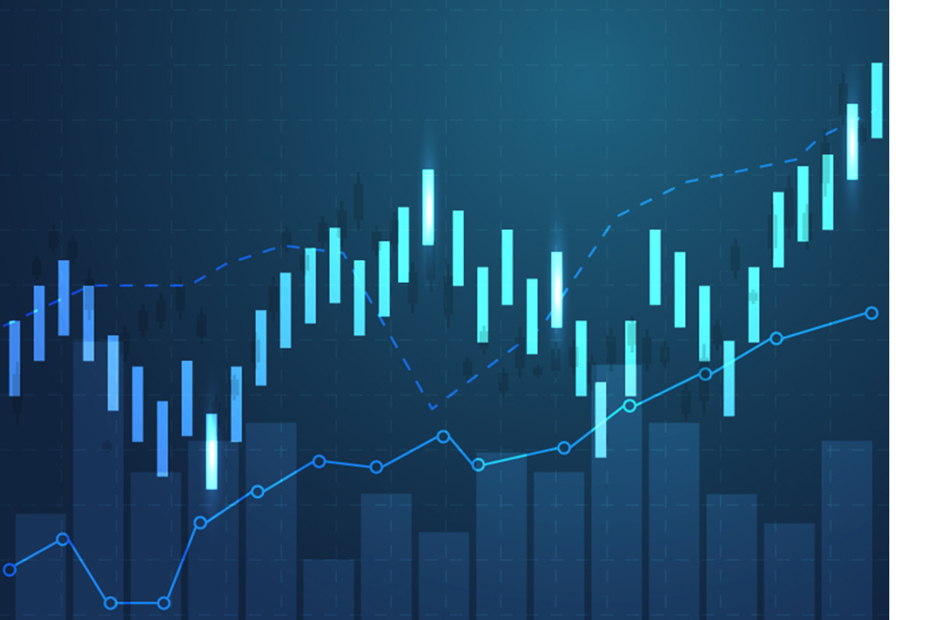Historic pandemics and the shadow of the Spanish flu
Despite the seemingly unprecedented panic and worldwide disruptions caused by COVID-19, pandemics are nothing new. The emergence and spread of infectious diseases with pandemic potential – such as plague, cholera, tuberculosis, and influenza – have occurred regularly since the dawn of mankind.
Before SARS-CoV-2 emerged in late 2019, most of the infectious disease research community anticipated that the most likely pathogen to cause the next pandemic would be a novel influenza strain. The human-adapted influenza virus transmits easily from person to person; people can carry it without showing symptoms, allowing sufficient time for infected individuals to travel and potentially infect others; and its symptoms can be confusing and difficult to immediately identify as the flu, particularly in the early periods of infection.
These deadly attributes fed the astonishing progression and spread of the 1918 Spanish flu, which killed between 20 and 100 million people at a time when the global population was just 1.8 billion.
In August 2021, a group of environmental engineering researchers led by Marco Marani published a paper on the “Intensity and spread of extreme novel epidemics.”[5] They combed 400 years of records to identify 185 pandemics globally that caused significant loss of human life. While COVID-19 upended our global society for a time, that pandemic's impact (and that of nearly every other pandemic on record) is dwarfed by the devastation wrought by the 1918 Spanish flu.
This chart illustrates pandemic intensity, defined as the number of deaths divided by the global population at that point in time and the pandemic's duration – essentially, deaths per 1,000 people per year. The researchers examined the probability of humans experiencing a pandemic as severe as the Spanish flu. Assuming risk is stationary, they estimated that the probability of such a pandemic occurring yearly is 0.42%. Put another way, a pandemic of such an extreme scale would occur once every 235 years.
What made the Spanish Flu so deadly? Primarily its lethality and transmissibility.
Infection fatality rate (IFR)
Spanish flu uniquely affected working-age people in their 20s and 30s. When plotting the IFR by age, researchers expect to see a “U” or “J” among the data points for most viruses: The youngest and oldest lives are those with the greatest risk. The 1918 Spanish flu instead presents a remarkable “W” shape, demonstrating how deadly the virus was to a normally robust working-age population.
The overall IFR for Spanish Flu was 2.2% using a present-day age pyramid of the U.S. population. To put that in context, some estimates suggest the original strain of COVID-19 carried 0.8% IFR. Later variants of COVID-19 carried higher and lower IFRs; the Delta strain of COVID perhaps had an IFR very close to 2.2% and, like Spanish flu, seemed to be more lethal to working-age people.
Spread/R0
Pronounced “R naught,” R0 is a mathematical term that indicates the average number of people who will contract a contagious disease from one person with that disease. R0 is a function of numerous biological, socio-behavioral, and environmental factors, for example, population density and patterns of social interactions, work, and travel. R0 is a fundamental calculation that helps researchers estimate the spread of a pandemic and the effectiveness of interventions like quarantine, masking, and vaccines.
Scant epidemiological data make it difficult to estimate the R0 of the Spanish flu, which circled the globe with spectacular effectiveness given limited means of travel at the turn of the century. One study estimated its R0 to be 1.7-2.[6] Interestingly, Spanish flu was generally less transmissible than COVID-19. The original strain of COVID-19 carried an R0 of approximately 2.5; later strains like Delta (R0 estimated 6) and Omicron (R0 estimated 8) were much more transmissible.
Could a Spanish flu-level pandemic occur today? In 1918, many U.S. cities attempted non-pharmaceutical interventions (NPIs) such as isolation, quarantine, use of disinfectants, and limits on public gatherings to curb the pandemic. But without modern medicine including antibiotics, flu vaccines, and antiviral drugs – and compounded by poor sanitation and food scarcity caused by World War I – Spanish flu ravaged the global population. Today’s world is much better equipped to respond to an influenza pandemic. One model from 2018[7] estimated that nearly 70% fewer deaths would result from a Spanish flu event had it occurred 100 years later.
Assessing the risk of future pandemics
To estimate the frequency and severity of future pandemics, researchers employ probabilistic modeling techniques that can augment the historical record with a large catalog of hypothetical, scientifically plausible simulated pandemics that represent a wide range of possible scenarios.
Modeling can also incorporate significant changes that have occurred since historical times, such as medical advances, changing demographics, and shifting travel patterns.
Researchers can “play” with their models by applying different rates of IFR and R0 to gauge the impact of a simulated pandemic. Other key modelling assumptions might include the choice and effectiveness of NPIs, the timing of a vaccine rollout, vaccine efficacy and uptake.
These exercises are essential for assessing risk, as most researchers believe pandemics will occur more frequently in the future.[8] A 2020 report[9] from the Intergovernmental Science-Policy Platform on Biodiversity and Ecosystem Services (IPBES) warns that future pandemics will emerge more often, spread more rapidly, do more damage to the world economy, and kill more people than COVID-19 unless there is a transformative change in the global approach to dealing with infectious diseases, from reaction to prevention.
Lessons learned from COVID-19
Given the high probability of future pandemics, the most recent global pandemic offers key lessons for insurers and policymakers.
Vaccines
Vaccines do not solve everything, and herd immunity – when a large portion of a community (the herd) becomes immune to a disease – may be difficult or impossible to achieve. Developing, manufacturing, and distributing vaccines – a process that itself took months to complete – helped immensely in protecting public health, but COVID-19 and its deadly variants continued to spread even after wide introduction of vaccines. Additionally, no vaccine is 100% effective. Public health officials also realized not every person is willing to take a vaccine. Vaccine hesitancy varies considerably by age, country, and other factors – although vaccine uptake is markedly higher in insured lives. As early as 2019, the World Health Organization (WHO) named vaccine hesitancy as one of the top 10 threats to global health.
Ripple effects
COVID-19 deaths were not the only driver of excess deaths during the pandemic. In addition to causing economic shocks, the pandemic overwhelmed health systems, causing significant delays in treatments for other medical conditions. The pandemic also influenced other public-health problems, exacerbating addiction-related deaths, mental illness and anxiety disorders, and financial stress and housing insecurity.
Country differences
During the pandemic, researchers observed that infection and mortality rates differed between countries based on several risk factors. RGA researchers conducted a correlation analysis and found the following drivers had the highest correlation to COVID-19 deaths globally:
- Prevalence of cardiovascular diseases
- Gross domestic product (GDP)
- Gini index (income inequality)
- Vaccine uptake of the first two shots
- Proportion of population living in urban areas
RGA researchers studied other risk factors like obesity and smoking but did not find a strong enough correlation for those factors.
Differences between the insured and general population
In general, the mortality on fully underwritten products is significantly lower than that of the general population, because full medical underwriting usually removes at‐risk groups, such as people with underlying chronic diseases. Insured individuals tend to have a higher socioeconomic status, which may afford them better healthcare access and greater awareness of pandemic risks. However, this same demographic is more prone to travel internationally and reside in densely populated urban centers, factors which can introduce different risks.vi
RGA research, including a series of COVID mortality reports and updates authored with the Society of Actuaries (SOA) and LIMRA, determined the direct and indirect impact COVID-19 has had on mortality in insured lives as well as the general population. It was clear from these studies that COVID-19 levied unequal effects on mortality rates in insured lives versus the general population, with significant differences by age.
Conclusion
The experiences of the COVID-19 pandemic, set against the backdrop of historical contagions like the Spanish flu, offer an invaluable learning opportunity for life insurers and life reinsurers to reassess their exposure to catastrophic mortality events. While the probability of a pandemic in any given year is low, the likelihood of significant losses for insurers is high without adequate risk management. Life insurers can take this opportunity to refine their internal risk models as well as their risk management strategies.
Some strategies to consider include reinsurance, and pursuing a diversified product range and geographical footprint. Other risk mitigation strategies include asset choice and management, and insurance‐linked securities (such as catastrophic mortality bonds).
The constant exposure of life insurers to pandemic risk remains a challenging issue; however, the COVID-19 pandemic has certainly deepened our understanding of this risk. Furthermore, pandemic preparedness and health security are now even more critical matters for governments, public health organizations and other institutions around the globe.
RGA experts provide clients with exclusive biometric risk and behavioral science insights that help them assess global health risks and develop and deploy models to better understand their financial risks. Contact us to learn more.





